An angiography enables imaging of the arteries, veins, and the heart chambers from inside. This ensures that the health of the blood vessels is checked. A special dye (contrast) is used to take pictures of the vessels and these also include arteries of the organs in your body such as brain, heart, and kidneys.
The healthcare system in South Africa is on a growth path. This has happened owing to the consistent efforts of both the government and the private sector entities. The result is reflected in the excellent healthcare delivery that is now a norm in South Africa. Cardiac Treatment in the country including procedures such as Angiography is also being performed with professionalism and effectiveness making use of cutting edge technologies. The Cardiac specialists in South Africa have found the right balance between excellence of service and soft qualities such as empathy and kindness.This is in no less measure because of the education and training they receive from some of the best healthcare organisations in the world.
Best Hospitals for Angiography (Including Non-Ionic Contrast) in South Africa are Ahmed Kathrada Private Hospital, Life Kingsbury Hospital, and Ethekwini Hospital and Heart Centre.
The cost of Angiography in South Africa is US$ 2,000 which is quite economical when we see the prices of this procedure in countries such as the United Kingdom and the United States of America. Also, the cardiac care facilities provided by the hospitals in South Africa add to the cost benefit provided.
| Country | Minimum Cost | Minimum Local Currency | Maximum Cost | Maximum Local Currency |
|---|---|---|---|---|
| India | USD 500 | INR 41575 | USD 1000 | INR 83150 |
| Thailand | USD 1200 | THB 42780 | USD 1500 | THB 53475 |
| Turkey | USD 1350 | TRY 40689 | USD 1650 | TRY 49731 |
| United Arab Emirates | USD 1200 | AED 4404 | USD 3500 | AED 12845 |
Treatment cost
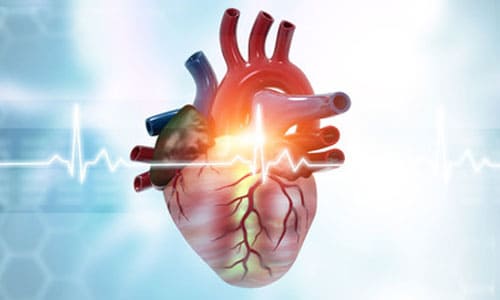
MediGence is offering immense facilities for your medical journey such as:
With us, you are sure to receive all the benefits at competitive prices which is a better choice than paying actual hospital costs. Special dye (contrast) and X-Rays are used in Angiogram to ensure pictures of arteries in heart, kidneys, and brain are taken. This is accomplished by injecting the dye through a catheter or small tube which then goes into an artery in the groin or arm (sometimes). This insertion is done post local anesthesia injected around the artery. Angiogram is known as an X Ray of blood vessels and can be diagnostic and therapeutic in nature., You can get the package with exceptional benefits at Artemis Health Institute in India here with us.
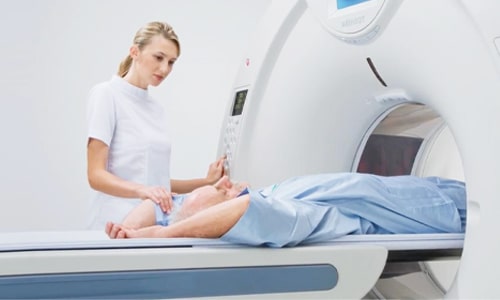
MediGence is offering immense facilities for your medical journey such as:
With us, you are sure to receive all the benefits at competitive prices which is a better choice than paying actual hospital costs. Special dye (contrast) and X-Rays are used in Angiogram to ensure pictures of arteries in heart, kidneys, and brain are taken. This is accomplished by injecting the dye through a catheter or small tube which then goes into an artery in the groin or arm (sometimes). This insertion is done post local anesthesia injected around the artery. Angiogram is known as an X Ray of blood vessels and can be diagnostic and therapeutic in nature., You can get the package with exceptional benefits at NMC Specialty Hospital, Al Nahda in United Arab Emirates here with us.

Apart from in-detail treatment procedures available, Lenmed Ethekwini Hospital and Heart Centre located in Durban, South Africa has a wide variety of facilities available for International Patients. Some of the facilities which are provided by them are Accommodation, Airport Transfer, Choice of Meals, Interpreter, SIM, TV inside room. Also listed below are some of the most prominent infrastructural details:

Apart from in-detail treatment procedures available, Lenmed Ahmed Kathrada Private Hospital located in Johannesburg, South Africa has a wide variety of facilities available for International Patients. Some of the facilities which are provided by them are Accommodation, Airport Transfer, Choice of Meals, Interpreter, SIM, TV inside room. Also listed below are some of the most prominent infrastructural details:
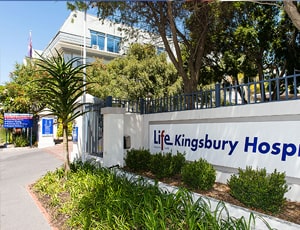
Apart from in-detail treatment procedures available, Life Kingsbury Hospital located in Cape Town, South Africa has a wide variety of facilities available for International Patients. Some of the facilities which are provided by them are Accommodation, Airport Transfer, Choice of Meals, Interpreter, SIM, TV inside room. Also listed below are some of the most prominent infrastructural details:

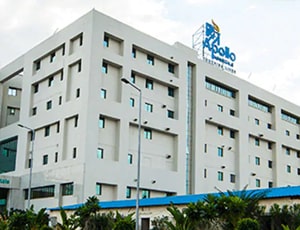
Types of Angiography (Including Non-Ionic Contrast) in Apollo Hospital and its associated cost
| Treatment Option | Approximate Cost Range (USD) | Approximate Cost Range (INR) |
|---|---|---|
| Angiography (Overall) | 559 - 1025 | 45560 - 84680 |
| Coronary Angiography | 556 - 910 | 46803 - 74107 |
| Cerebral Angiography | 688 - 1033 | 56011 - 83060 |
| Peripheral Angiography | 682 - 995 | 55842 - 82600 |
| Renal Angiography | 571 - 901 | 46659 - 74302 |
DOCTORS IN 13 SPECIALITIES
FACILITIES & AMENITIES
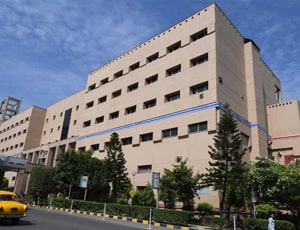
Types of Angiography (Including Non-Ionic Contrast) in Apollo Multispecialty Hospitals and its associated cost
| Treatment Option | Approximate Cost Range (USD) | Approximate Cost Range (INR) |
|---|---|---|
| Angiography (Overall) | 572 - 1007 | 45836 - 82177 |
| Coronary Angiography | 567 - 904 | 47052 - 73414 |
| Cerebral Angiography | 680 - 1004 | 54919 - 84672 |
| Peripheral Angiography | 673 - 1028 | 55794 - 84361 |
| Renal Angiography | 552 - 915 | 45840 - 73562 |
DOCTORS IN 13 SPECIALITIES
FACILITIES & AMENITIES

Types of Angiography (Including Non-Ionic Contrast) in Memorial Atasehir Hospital and its associated cost
| Treatment Option | Approximate Cost Range (USD) | Approximate Cost Range (TRY) |
|---|---|---|
| Angiography (Overall) | 574 - 1657 | 16658 - 50672 |
| Coronary Angiography | 915 - 1657 | 26560 - 51973 |
| Cerebral Angiography | 1123 - 2214 | 33619 - 68337 |
| Peripheral Angiography | 910 - 1717 | 27473 - 50562 |
| Renal Angiography | 898 - 1684 | 27048 - 50703 |

Types of Angiography (Including Non-Ionic Contrast) in Medicana Bahcelievler Hospital and its associated cost
| Treatment Option | Approximate Cost Range (USD) | Approximate Cost Range (TRY) |
|---|---|---|
| Angiography (Overall) | 552 - 1664 | 16873 - 51120 |
| Coronary Angiography | 885 - 1696 | 26656 - 50748 |
| Cerebral Angiography | 1131 - 2205 | 33733 - 68252 |
| Peripheral Angiography | 917 - 1661 | 27412 - 50783 |
| Renal Angiography | 918 - 1699 | 27419 - 50906 |

Types of Angiography (Including Non-Ionic Contrast) in Fortis Hospital and its associated cost
| Treatment Option | Approximate Cost Range (USD) | Approximate Cost Range (INR) |
|---|---|---|
| Angiography (Overall) | 510 - 916 | 41580 - 75007 |
| Coronary Angiography | 509 - 814 | 41805 - 66591 |
| Cerebral Angiography | 607 - 915 | 50087 - 75268 |
| Peripheral Angiography | 607 - 910 | 50141 - 74822 |
| Renal Angiography | 508 - 815 | 41428 - 66274 |
DOCTORS IN 12 SPECIALITIES
FACILITIES & AMENITIES

Types of Angiography (Including Non-Ionic Contrast) in Wockhardt Hospital, Umrao and its associated cost
| Treatment Option | Approximate Cost Range (USD) | Approximate Cost Range (INR) |
|---|---|---|
| Angiography (Overall) | 507 - 916 | 41623 - 74922 |
| Coronary Angiography | 507 - 813 | 41417 - 66500 |
| Cerebral Angiography | 609 - 912 | 49794 - 74975 |
| Peripheral Angiography | 610 - 914 | 49991 - 74937 |
| Renal Angiography | 509 - 816 | 41729 - 66806 |
DOCTORS IN 13 SPECIALITIES
FACILITIES & AMENITIES
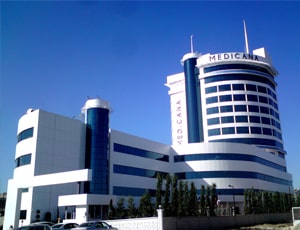
Types of Angiography (Including Non-Ionic Contrast) in Medicana Konya Hospital and its associated cost
| Treatment Option | Approximate Cost Range (USD) | Approximate Cost Range (TRY) |
|---|---|---|
| Angiography (Overall) | 557 - 1709 | 17165 - 50662 |
| Coronary Angiography | 918 - 1677 | 26734 - 50933 |
| Cerebral Angiography | 1132 - 2284 | 34280 - 68472 |
| Peripheral Angiography | 884 - 1699 | 26959 - 50516 |
| Renal Angiography | 886 - 1662 | 26941 - 51569 |

Types of Angiography (Including Non-Ionic Contrast) in Canadian Specialist Hospital and its associated cost
| Treatment Option | Approximate Cost Range (USD) | Approximate Cost Range (AED) |
|---|---|---|
| Angiography (Overall) | 2809 - 4514 | 10273 - 16353 |
| Coronary Angiography | 2827 - 3964 | 10140 - 14727 |
| Cerebral Angiography | 3367 - 4475 | 12179 - 16782 |
| Peripheral Angiography | 2776 - 3888 | 10424 - 14377 |
| Renal Angiography | 2851 - 3922 | 10403 - 14293 |
DOCTORS IN 9 SPECIALITIES
FACILITIES & AMENITIES
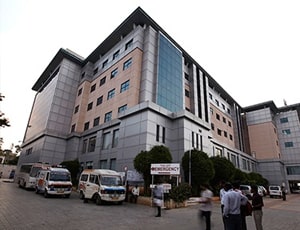
Types of Angiography (Including Non-Ionic Contrast) in BGS Gleneagles Global Hospitals and its associated cost
| Treatment Option | Approximate Cost Range (USD) | Approximate Cost Range (INR) |
|---|---|---|
| Angiography (Overall) | 571 - 1015 | 47016 - 84315 |
| Coronary Angiography | 562 - 894 | 45845 - 74536 |
| Cerebral Angiography | 685 - 992 | 54710 - 84061 |
| Peripheral Angiography | 664 - 990 | 56518 - 83070 |
| Renal Angiography | 570 - 911 | 46457 - 73912 |
DOCTORS IN 14 SPECIALITIES
FACILITIES & AMENITIES

Types of Angiography (Including Non-Ionic Contrast) in Indraprastha Apollo Hospital and its associated cost
| Treatment Option | Approximate Cost Range (USD) | Approximate Cost Range (INR) |
|---|---|---|
| Angiography (Overall) | 568 - 994 | 45568 - 82064 |
| Coronary Angiography | 573 - 886 | 45337 - 73029 |
| Cerebral Angiography | 669 - 1028 | 55541 - 82581 |
| Peripheral Angiography | 677 - 1034 | 56052 - 81558 |
| Renal Angiography | 567 - 919 | 45908 - 73132 |
DOCTORS IN 14 SPECIALITIES
FACILITIES & AMENITIES

Types of Angiography (Including Non-Ionic Contrast) in Manipal Hospital, Yeshwantpur and its associated cost
| Treatment Option | Approximate Cost Range (USD) | Approximate Cost Range (INR) |
|---|---|---|
| Angiography (Overall) | 566 - 1006 | 46947 - 82514 |
| Coronary Angiography | 568 - 916 | 45960 - 73905 |
| Cerebral Angiography | 663 - 1020 | 54149 - 83386 |
| Peripheral Angiography | 687 - 1007 | 55538 - 82231 |
| Renal Angiography | 561 - 887 | 46940 - 74793 |

Types of Angiography (Including Non-Ionic Contrast) in NMC Specialty Hospital - Al Ain and its associated cost
| Treatment Option | Approximate Cost Range (USD) | Approximate Cost Range (AED) |
|---|---|---|
| Angiography (Overall) | 2804 - 4495 | 10413 - 16748 |
| Coronary Angiography | 2805 - 3873 | 10313 - 14334 |
| Cerebral Angiography | 3333 - 4498 | 12335 - 16806 |
| Peripheral Angiography | 2831 - 3991 | 10201 - 14316 |
| Renal Angiography | 2763 - 3949 | 10402 - 14300 |
DOCTORS IN 10 SPECIALITIES
FACILITIES & AMENITIES
Non-ionic angiography is a type of angiography procedure that utilizes non-ionic contrast media. Contrast media are substances injected into the bloodstream to enhance the visibility of blood vessels during imaging procedures such as angiography. Non-ionic contrast media have lower osmolality in comparison to older ionic contrast media, which means they are less likely to cause adverse reactions such as allergic reactions or kidney damage.
Non-ionic contrast media are commonly used in modern medical imaging techniques, including angiography, to provide clearer and safer visualization of blood vessels.
Angiography is often indicated for patients with coronary heart disease (CHD), which can lead to sudden cardiac arrest and severe chest pain. In emergencies, such as during a heart attack, angiography is crucial for diagnosing and treating blockages promptly to prevent further damage to the heart muscle. Delayed treatment can result in the surrounding healthy tissues becoming scarred, leading to long-term complications. Additionally, angiography may be necessary for patients with conditions like aortic stenosis or those who have abnormal results on heart stress tests.
The angiography procedure begins with administering a sedative for relaxation and inserting an intravenous line for precautionary measures. An antiseptic agent cleans the area, followed by the administration of local anesthesia. A small incision is made to insert a stylet needle into the artery, later replaced by a guide wire. The guide wire is directed to the target artery using fluoroscopy, and once in place, the needle is removed, and a catheter is inserted over the guide wire.
Contrast medium is then injected through the catheter, either manually or via a power injector, following a test injection to ensure proper positioning. Patients are instructed to remain as still as possible during this process, as the injection may cause mild discomfort or side effects like dizziness or warmth. Radiographs or fluoroscopic images are rapidly obtained to visualize the blood flow.
Digital subtraction angiography (DSA) allows for electronic manipulation of the images for better analysis. After image capture, the catheter is slowly removed, and manual pressure is applied to the insertion site to seal the puncture. A pressure bandage is then applied to the site to aid in the healing process.
After angiography with non-ionic contrast, recovery involves 6 to 12 hours of observation, particularly for outpatient cases. The punctured leg, if involving the femoral artery, remains immobile.
Cold packs reduce swelling, and medications alleviate discomfort. Patients rest for 2 to 3 days, avoiding strenuous activities and refraining from driving, especially after fluorescein angiography. Minimizing sunlight exposure for 12 hours post-procedure is advised to prevent skin reactions.
Ask your healthcare adviser for the best multiple options and choose the one that meets your expectations
The cost of Angiography (Including Non-Ionic Contrast) in South Africa may differ from one medical facility to the other. The cost quoted by some of the best hospitals for Angiography (Including Non-Ionic Contrast) in South Africa generally covers the pre-surgery investigations of the patient. Typically, the package cost of Angiography (Including Non-Ionic Contrast) in South Africa includes the expenses related to the surgeon's fee, anesthesia, hospital, meals, nursing and ICU stay. A prolonged hospital stay due to delayed recovery, new diagnosis and complications after surgery may increase the cost of Angiography (Including Non-Ionic Contrast) in South Africa.
There are many hospitals that perform Angiography (Including Non-Ionic Contrast) in South Africa. Some of the most renowned hospitals for Angiography (Including Non-Ionic Contrast) in South Africa include the following:
The recovery of the patient many vary, depending on several factors. However, on an average, patient is supposed to stay for about 3 days in the country after discharge. This period is important to conduct all the follow-up tests to ensure that the surgery was successful and the patient can go back to the home country.
There are certain expenses additional to the Angiography (Including Non-Ionic Contrast) cost that the patient may have to pay for. These are the chanrges for daily meals and hotel stay outside the hospital. The per day cost in this case may start from USD 50 per person.
Some of the cpopular cities in South Africa that offer Angiography (Including Non-Ionic Contrast) include the following:
The patient has to spend about 1 days in the hospital after Angiography (Including Non-Ionic Contrast) for proper recovery and to get clearance for discharge. The doctors team review the patient's recovery during this time with the help of blood tests and imaging scans. Once they feel that everything is on track, the patient is discharged.
The average rating for Angiography (Including Non-Ionic Contrast) hospitals in South Africa is 2.9. This rating is automatically calculated on the basis of several parameters such as the infrastructure of the hospital, quality of services, nursing support and other services.
There are more than 3 hospitals that offer Angiography (Including Non-Ionic Contrast) in South Africa. These hospitals have propoer infrastructure as well as offer good quality of services when it comes to Angiography (Including Non-Ionic Contrast) Also, these hospitals follow the necessary guidelines as required by the medical associations for the treatment of Angiography (Including Non-Ionic Contrast) patients.